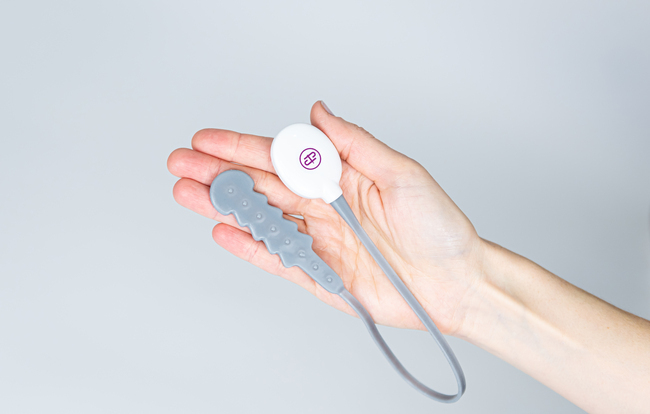Discover the longevity of hip replacement surgeries, from immediate recovery to long-term care. Learn about lifestyle adjustments, potential risks, and advancements in surgical techniques.
Following hip replacement surgery, you’ll suddenly find you can be more active. Hobbies and interests, once too intensive or painful, are now part of your daily life. Soon enough, you’re practising your golf swing or taking long walks with your dog.
However, even with the advancements in materials, hip replacements won’t last forever. These artificial joints are designed to last a long time – keeping you fit and active. But how long can you realistically expect an artificial hip replacement to last?
In this article, we’ll answer this question and delve into other aspects of your post-hip replacement surgery recovery.
We’ll cover:
- Hip Replacement Surgery Recovery
- Post-Hip Replacement Surgery Lifestyle Adjustments
- How Long Does a Hip Replacement Last
- Reasons for Further Hip Surgery
- Hip Replacement Surgery at Kardiolita Hospital
Hip Replacement Surgery Recovery
Hip replacement surgery, or hip arthroplasty, is one of the most invasive replacement surgeries. Afterward, you should feel immediate relief from hip pain and improved hip function. However, just because you feel an improvement doesn’t mean you’re ready to start pursuing an active lifestyle.
Nonetheless, you should still try to get up and walk as soon as possible after surgery. You’ll feel some discomfort walking and exercising at first, and your legs and feet may be swollen. Pain medication is often necessary for 7 to 10 days following the surgery.
You’ll be asked to perform a set of exercises to facilitate recovery and build strength around the new joint. That also helps reduce swelling and promote blood circulation.
Usually, a patient can leave the hospital after 3 to 5 days, depending on their progress. If you’re responding particularly well, an enhanced recovery programme is advisable.
Post-Hip Replacement Surgery Lifestyle Adjustments
Enjoying your newfound freedom post-surgery is the best part of having a replacement. However, while it’s undoubtedly liberating, there are a few lifestyle adjustments required, including:
- Fall prevention: To avoid potential hip dislocation or fractures near the implant, eliminate home hazards like loose rugs or cords, install supportive equipment like bathroom grab bars, and use walking aids until deemed unnecessary.
- Being mindful of post-surgery postures: Surgeons often advise patients to steer clear of specific postures post-surgery, such as leg-crossing, side-sleeping, or sitting on low-set furniture, to reduce the risk of hip dislocation.
- Maintaining a healthy weight: Carrying extra weight can increase stress on joint replacement implants, potentially reducing their lifespan.
- Opting for low-impact activities: Activities like jogging, jumping, or contact sports like football might not be painful but can exert undue stress on a hip replacement, hastening wear and tear.
- Prioritising bone health: Beyond adequate vitamin D and calcium intake, those with osteoporosis may benefit from prescribed medications such as bisphosphonates.
- Proactive antibiotic use: Invasive medical procedures, including dental ones, might necessitate antibiotics to protect the hip joint replacement from potential bacterial infections.
How Long Does a Hip Replacement Last
Even if everything goes perfectly, hip implants will eventually fail. That usually means another hip replacement surgery to mend or replace the implant. Failure, however, can occur over the short- or long-term, depending on the patient.
Factors Affecting Replacement Longevity
Immediate Factors
Much rarer than the longer-term factors, in some instances, implants can fail within weeks or months of the operation due to:
- Poor surgical technique. Choosing the wrong surgeon or surgical approach can influence the initial implant stability and short-term outcomes.
- Post-surgical rehabilitation. Inadequate physical therapy or poor patient adherence to rehab exercises can affect implant success.
- Post–surgical complications. Infections, blood clots, and post-operative dislocations are among the most common reasons for implant failure, especially in individuals with uncontrolled diabetes, increased BMI, or poor nutrition.
- Patient activity levels. Rapidly returning to high-impact activities or overexertion soon after surgery can jeopardise the implant.
- Weight-bearing status. Bearing weight too soon or too late can impact short-term recovery and implant stability.
Long-Term Factors
- Patient activity levels. Continuous high-impact activities over the years, such as jogging or jumping, can hasten wear and tear.
- Material wear. Eventually, all materials will wear, requiring replacement. Newer materials are becoming more hard-wearing and long-lasting than their predecessors.
- Excess weight. Carrying extra weight can increase stress on the implant, potentially reducing its lifespan.
- Bone health. If the surrounding bone is affected by osteoporosis or osteopenia, it can affect its ability to support the implant.
- Falls or fractures. Frequent falls or hip trauma can damage the implant or the bone around it.
- Recurring infections. Chronic or repeated infections can compromise the implant and surrounding bone.
The Evidence
Technology is never static – where once hip replacements were exclusively metal, newer options and surgical techniques are improving the longevity of implants. Ceramic implants were the next step; with an extremely hard surface, they reduce the risk of wear and tear.
Now, a cutting-edge technology called highly cross-linked polyethylene – a type of plastic – has extreme low-wear properties.
But how long can you expect your implant to last with today’s techniques and materials? According to a study in The Lancet, researchers found:
- Out of 60,000 individuals with hip replacements, only 4.4% needed a second surgery within 10 years. This number rose to 15% in 20 years.
- For 55,000 knee replacements, 3.9% needed another surgery in 10 years and 10.3% by 20 years.
- Age played a role: those over 70 had a 5% chance of needing another surgery. However, younger men, especially those in their early 50s, had up to a 35% chance of requiring a second operation.
So, for most patients, a second hip replacement surgery is usually unnecessary. And those who undergo a second surgery are unlikely to ever undergo a third.
Hip Replacement Surgery at Kardiolita Hospital
Kardiolita Hospital, in Lithuania, is a leading hip replacement surgery centre. With an experienced team of orthopaedic surgeons, nurses, physiotherapists, and more, they’ve handled thousands of patients from Ireland and beyond.
If you want the highest standards in surgical care, book a consultation with Kardiolita Hospital to learn how they can transform your life. One of the key benefits of health tourism is the reduced cost. Compared to the cost a hip replacement in Ireland, patients can expect to pay around a tenth of the cost.
Book your appointment with Kardiolita Hospital today and choose a pain-free life.







